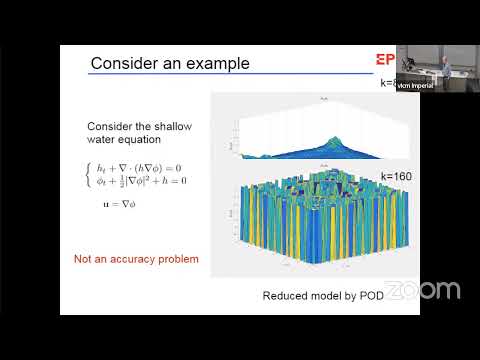Description:
Explore structure-preserving model order reduction techniques for Hamiltonian systems in this 45-minute lecture by Jan S. Hesthaven. Delve into the challenges of developing reduced order models for complex applications, focusing on nonlinear and time-dependent problems. Examine recent developments in projection-based model order reduction methods targeting Hamiltonian problems, which are prevalent in mathematical physics. Learn how approaching the reduction process from the geometric perspective of symplectic manifolds can lead to reduced models that inherit stability and conservation properties. Discover the principles of symplectic geometry, including symplectic vector spaces, Darboux' theorem, and Hamiltonian vector fields. Investigate different structure-preserving reduced basis algorithms and their extensions to problems in noncanonical Hamiltonian form. Explore the development of nonlinear reduced order models using local bases for problems with slowly decaying Kolmogorov n-width, such as transport-dominated problems. Gain insights into the efficiency of these techniques through examples like the Poisson-Vlasov problem in kinetic plasma physics.
Read more

Structure-Preserving Model Order Reduction of Hamiltonian Systems
Add to list